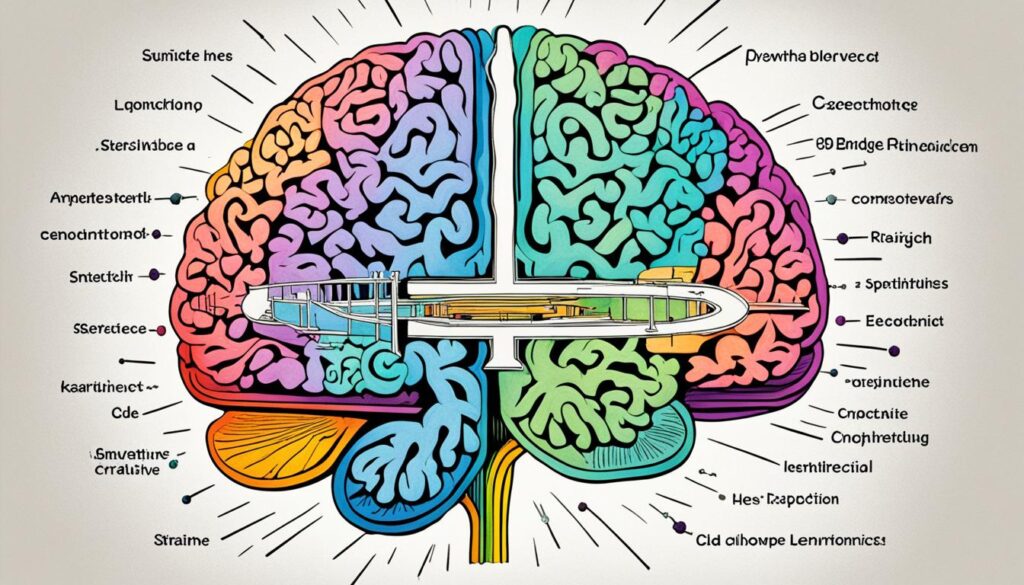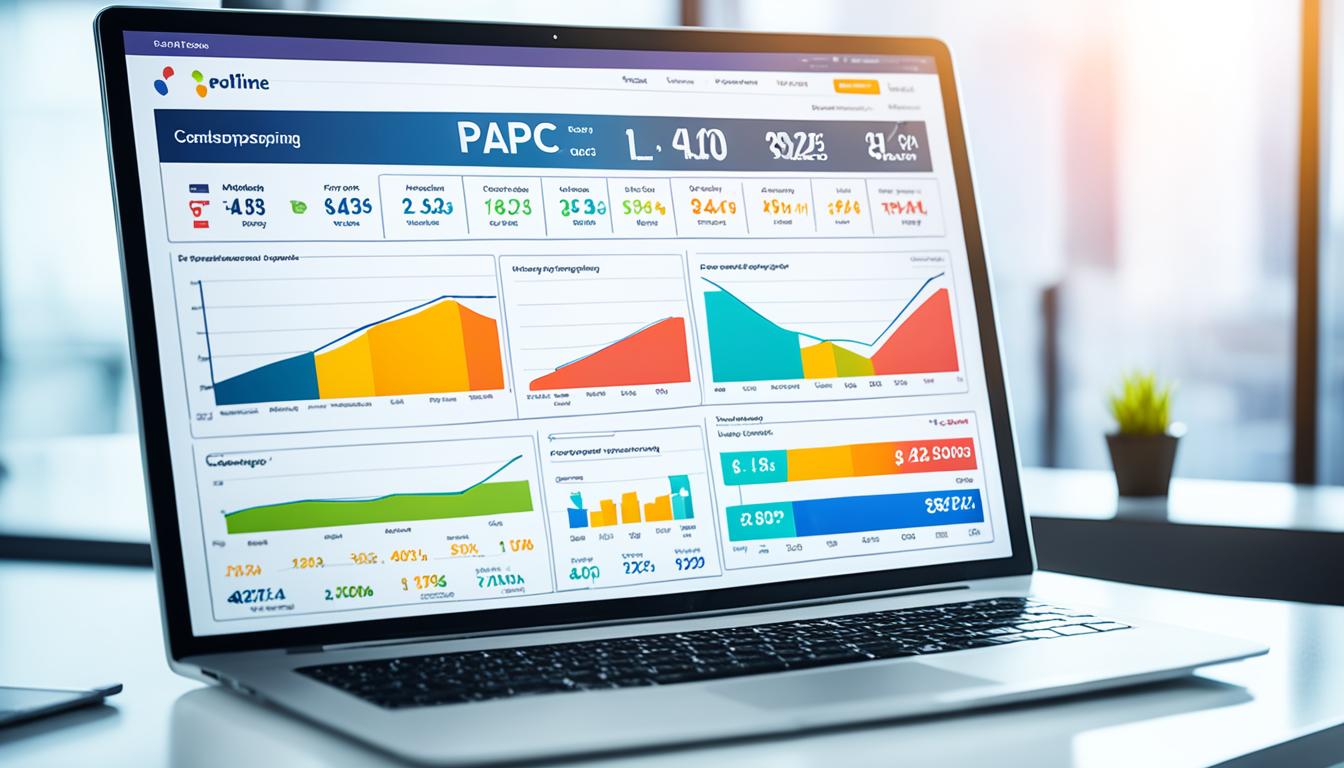Thank you for stopping by our blog, where we explore the fascinating world of marketing and analyze the different strategies used by marketers. In today’s post, we will delve into the difference between left-brain and right-brain marketers, uncovering their unique approaches and exploring how they can be merged to form a powerful marketing mix.
Left-brain marketers, known for their analytical prowess, rely on data, logic, and measurable outcomes to drive their marketing strategies. They excel at crafting practical pitches that highlight a product’s features and value, appealing to niche audiences with their logical appeals. On the other hand, right-brain marketers bring creativity and emotional intelligence to the table. They specialize in storytelling, aesthetics, and evoking strong emotional connections with their audience.
While left-brain marketing strategies focus on practicality and value, right-brain marketing strategies emphasize emotional resonance and creativity. The challenge lies in finding the right balance between the two approaches to create impactful and effective marketing campaigns that resonate with a wider audience.
Key Takeaways:
- Left-brain marketers prioritize data, logic, and measurable outcomes.
- Right-brain marketers emphasize creativity, emotions, and aesthetics.
- Successful marketing often integrates both left-brain and right-brain strategies.
- The key is to find a balance between practicality and creativity in marketing campaigns.
- Niche audiences may be more receptive to left-brain appeals, while a wider audience may connect with right-brain storytelling and aesthetics.
Characteristics of Left-Brain Marketers
When it comes to marketing, left-brain marketers bring a unique set of characteristics to the table. Known for their analytical mindset and data-driven approach, these marketers thrive on facts, logic, and measurable outcomes.
Analytical Thinkers: Left-brain marketers excel in analyzing complex data and drawing insights from it. They have a keen eye for patterns, trends, and correlations, which enables them to make strategic marketing decisions based on solid evidence.
Data-Driven Marketing: Left-brain marketers rely heavily on data to inform their marketing strategies. They use metrics, analytics tools, and custom URLs to track the performance of their campaigns and measure return on investment (ROI) accurately.
Logical Appeals: Instead of relying solely on emotional appeals, left-brain marketers craft practical pitches that highlight the product’s utility and emphasize its value proposition. They present logical arguments and tangible benefits to appeal to their target audience’s rational thinking.
Quote: “Left-brain marketers are the masterminds behind data-driven precision and measurable outcomes. Their logical thinking and analytical skills make them experts in crafting value-driven advertising.” – Bryn, Marketing Guru
Left-brain marketers excel at targeting niche audiences with their precise, data-backed strategies. They understand the importance of delivering focused messages that resonate with their audience’s logical thinking. By leveraging their analytical mindset, these marketers create marketing campaigns that drive results.
| Characteristics of Left-Brain Marketers |
|---|
| Analytical Thinkers |
| Data-Driven Marketing |
| Logical Appeals |
Characteristics of Right-Brain Marketers
Right-brain marketers possess unique characteristics that set them apart as creative visionaries in the marketing world. Let’s explore the key traits that define these innovative thinkers:
- Creative Marketers: Right-brain marketers are known for their exceptional creativity. They have a natural ability to think outside the box and generate unique ideas that captivate audiences.
- Emotional Marketing: A significant aspect of right-brain marketing is the ability to tap into emotions. These marketers know how to create meaningful connections with their audience by evoking strong feelings and responses.
- Innovative Thinkers: Right-brain marketers are constantly pushing boundaries and exploring new ideas. They thrive in environments that encourage innovation and are not afraid to take risks to achieve their marketing goals.
Right-brain marketers are master storytellers who excel at crafting narratives that resonate with their target audience.
“Storytelling is incredibly important in marketing; it connects audiences to brands on an emotional level and leaves a lasting impact.” – Thorsten Meyer
They understand the power of aesthetics and use stunning visuals, evocative language, and compelling design to create an emotional connection with their audience. By leveraging platforms such as YouTube and Facebook, right-brain marketers excel at social engagement, building brand loyalty, and injecting personality into their marketing campaigns.
Characteristics Comparison
| Characteristics | Left-Brain Marketers | Right-Brain Marketers |
|---|---|---|
| Approach | Analytical and pragmatic | Creative and imaginative |
| Focus | Logical appeals and practicality | Emotional resonance and aesthetics |
| Strengths | Data-driven precision and accountability | Creative storytelling and social engagement |
| Goal | Niche audience appeal | Wide audience reach and brand loyalty |

Balancing Left-Brain and Right-Brain Marketing
While left-brain and right-brain marketers have distinct approaches, the most effective marketing strategies often integrate the strengths of both sides. Combining left-brain’s analytical precision with right-brain’s emotional resonance can create powerful campaigns that appeal to a wider audience. Bridge brains, those who have a mix of both left and right brain tendencies, can find success by leveraging the best of both worlds.
Collaboration plays a vital role in bridging the gap between analytical and creative thinking. By bringing together individuals with diverse skill sets, we can generate innovative ideas and strategies that harness the power of both left-brain and right-brain thinking. Open-minded exploration allows us to push boundaries, challenge conventional approaches, and discover new ways to capture our audience’s attention.
Visual aids and storytelling techniques are effective tools for integrating both marketing approaches. Incorporating compelling visuals, such as infographics, videos, or interactive content, can enhance the impact of our campaigns and create a memorable brand experience. Storytelling, whether through narratives, case studies, or customer testimonials, helps us connect emotionally with our audience, inspiring trust and loyalty.
Remember, successful marketing isn’t just about being analytical or creative—it’s about finding the perfect balance. By combining the strengths of both left-brain and right-brain marketing, we can achieve remarkable results that resonate with our audience on both an intellectual and emotional level.
The Benefits of Balancing Left-Brain and Right-Brain Marketing:
- Appealing to a wider audience through a holistic approach that incorporates both logical reasoning and emotional connection.
- Creating impactful campaigns that drive engagement and generate measurable results.
- Standing out from competitors by offering a unique blend of analytical precision and creative imagination.
- Fostering innovation and out-of-the-box thinking by embracing collaboration and open-minded exploration.
By integrating both left-brain and right-brain marketing approaches, we can bridge the gap between analytical and creative thinking, unlocking the full potential of our marketing strategies and ensuring that no opportunity is missed.
| Left-Brain Marketing | Right-Brain Marketing |
|---|---|
| Focuses on data, statistics, and measurable outcomes | Emphasizes emotions, creativity, and imaginative thinking |
| Targets niche audiences with logical appeals | Seeks wider audience appeal through emotional resonance |
| Uses value-based advertising to highlight practicality and utility | Utilizes aesthetics and storytelling to create brand personality |
| Relies on analytical insights for decision-making | Leads with intuition and instinct |
Left-Brain Marketing Techniques
When it comes to appealing to a niche audience, left-brain marketers have a toolkit of techniques at their disposal. These marketers understand the power of logical appeals, data-driven marketing, and a value-based focus. Let’s explore the strategies they employ to capture the attention of their target demographic.
Logical Appeals
Left-brain marketers know that a logical approach resonates with their audience. They craft practical pitches that highlight the product’s features and benefits, using factual information and data to back up their claims. By appealing to the rational side of their customers, they build trust and credibility.
“Our product is backed by scientific research and proven results. With its advanced features and innovative design, it’s the logical choice for customers who value quality and performance.”
Data-Driven Marketing

Data is the backbone of left-brain marketing. By leveraging data, left-brain marketers make informed decisions and optimize their campaigns for success. They use analytics to track customer behavior, identify trends, and measure the effectiveness of their strategies. This data-driven approach allows them to make data-backed changes and continuously improve their marketing efforts.
Value-Based Focus
Left-brain marketers understand the importance of highlighting value. They showcase discounts, cost savings, and any unique selling propositions that set their product apart from the competition. By emphasizing the practical benefits and cost-effectiveness of their offerings, they appeal to the logical thinking of their audience.
“Our product offers exceptional value for money. Not only will customers save 20% off the regular price, but they’ll also experience the long-lasting durability and superior performance that comes with our brand.”
Measurable Outcomes
Accountability is a key focus for left-brain marketers. They set measurable goals and track their progress using data and metrics. By monitoring the success of their campaigns, they can make data-driven adjustments and ensure they are achieving the desired outcomes.
- Implementing custom URLs and tracking codes to measure ROI accurately
- Analyzing click-through rates, conversion rates, and customer acquisition metrics
- Utilizing A/B testing to optimize campaigns based on data-driven insights
These techniques form the foundation of left-brain marketing strategies. By utilizing logical appeals, data-driven insights, a value-based focus, and a commitment to accountability, left-brain marketers can effectively engage their niche audience and drive results.
Right-Brain Marketing Techniques
When it comes to captivating an audience on an emotional level, right-brain marketers have a suite of techniques up their sleeves. These marketers understand the power of storytelling, creating commercials and campaigns that resemble short stories with compelling narratives. By taking their audience on a journey, they forge a connection that lasts.
One of the hallmarks of right-brain marketing is its emphasis on aesthetics. With stunning visuals and creative imagery, these marketers grab attention and leave a lasting impression. From eye-catching graphics to visually captivating videos, they know how to create a feast for the senses.
But it’s not all about the visuals. Right-brain marketers understand the importance of harnessing the emotional appeal of their messaging. By tapping into the audience’s feelings, these marketers forge deeper connections and create a memorable experience.
“A picture may be worth a thousand words, but a deeply emotional story can be worth a thousand pictures. That’s the power of right-brain marketing.”
Social engagement also plays a crucial role in right-brain marketing. By leveraging platforms like YouTube and Facebook, these marketers foster conversations and create a distinctive brand personality. They understand that building a community and engaging with their audience on a personal level can lead to long-term loyalty.
In summary, right-brain marketing techniques focus on emotional appeals, storytelling, aesthetic allure, and social engagement. By creating narratives that tug at heartstrings, captivating with stunning visuals, and fostering meaningful connections through social media, these marketers create experiences that resonate with their audience.

| Right-Brain Marketing Techniques | Description |
|---|---|
| Storytelling | Crafting narratives that strike an emotional chord and captivate the audience. |
| Aesthetics | Utilizing stunning visuals, creative imagery, and captivating design to create a feast for the senses. |
| Emotional Appeals | Tapping into the audience’s feelings to forge deeper connections and create a memorable experience. |
| Social Engagement | Leveraging platforms like YouTube and Facebook to foster conversations and build a distinctive brand personality. |
Right-brain marketing techniques are essential tools that drive engagement, build brand loyalty, and leave a lasting impression on the audience. By cultivating an emotional connection, appealing to aesthetic sensibilities, and leveraging the power of social media, right-brain marketers create meaningful experiences that resonate with their target demographic.
The Power of Integration: Combining Left-Brain and Right-Brain Marketing
The most effective marketing strategies often integrate the strengths of both left-brain and right-brain thinking. By combining analytical precision with emotional resonance, we can create campaigns that capture attention and drive engagement. The power of integration lies in finding the right balance between the two approaches and leveraging their respective strengths.
Collaborative learning plays a vital role in merging left-brain and right-brain techniques. By working together, we can bring together the analytical insights and creative ideas of our team, resulting in innovative and impactful marketing strategies. Through open-minded exploration and sharing of perspectives, we can unlock new possibilities that go beyond the limitations of either approach.
Another key aspect of integration is mindful observation. By closely examining successful campaigns that have effectively blended analytical and creative thinking, we can gain inspiration and insights into what works best. Studying the strategies of industry leaders helps us identify patterns, trends, and techniques that we can apply to our own marketing efforts.

“Integrating left-brain and right-brain marketing allows us to blend the strengths of both approaches and create impactful campaigns that resonate with our audience.”
Visual aids are another valuable tool in bridging the gap between analytical and creative thinking. By incorporating visual elements such as infographics, charts, and images, we can effectively communicate data-driven insights in a visually appealing and engaging way. Visuals not only enhance the presentation of information but also help evoke emotions and establish a connection with our audience.
At the heart of integrating left-brain and right-brain marketing is the recognition that both approaches have unique strengths, and neither should be overlooked or undervalued. Analytical thinking provides us with valuable insights, allowing us to make data-driven decisions and optimize our strategies for better results.
On the other hand, creative thinking helps us connect with our audience on a deeper level, evoke emotions, and establish a memorable brand image. By blending the strengths of both approaches, we can create marketing campaigns that are both compelling and effective.
Key Takeaways:
- Integrating left-brain and right-brain thinking is key to successful marketing strategies.
- Collaboration and open-minded exploration help merge analytical and creative ideas.
- Mindful observation of successful campaigns provides insights and inspiration.
- Visual aids enhance the communication of data-driven insights and evoke emotions.
- Both analytical and creative thinking have unique strengths that should be leveraged.
Advice for Left-Brain Marketers
As left-brain marketers, we excel in analytical thinking and data-driven strategies. However, to further enhance our skills and broaden our perspective, it’s essential to engage in open-minded exploration and embrace collaboration with creative minds. By venturing into creative activities, we can foster innovative solutions that blend our analytical prowess with imaginative thinking, appealing to a wider audience.
Mindful observation of successful campaigns and storytelling practices can also play a crucial role in connecting with our audience on a more emotional level. By studying the techniques used in compelling narratives, we can learn to effectively incorporate elements of storytelling into our marketing efforts, thereby creating a deeper emotional connection with our target market.
“Integrating visual aids and appreciating the value of data-driven insights are key recommendations for left-brain marketers.”
Integrating visual aids such as infographics, charts, and diagrams into our marketing materials not only enhances the overall visual appeal but also helps convey complex information in a more digestible manner. Visual content can capture attention, effectively communicate messages, and make a lasting impression on our audience.
Furthermore, it is important for left-brain marketers to appreciate the value of data-driven insights. By embracing data analysis and utilizing data-driven decision-making, we can optimize our campaigns for better performance and outcomes. Data provides valuable insights into consumer behavior, enabling us to make informed decisions and fine-tune our marketing strategies based on real-time results.
Advantages of Open-Minded Exploration and Collaboration
Open-minded exploration and collaboration allow left-brain marketers to step outside our analytical comfort zone and tap into the world of creativity. By collaborating with creative minds, we can leverage their artistic vision and innovative thinking to develop more engaging and impactful marketing campaigns.
Collaboration sparks new ideas and fresh perspectives, ultimately leading to the creation of innovative marketing strategies that effectively blend analytical and imaginative thinking. By working together, we can harness the power of both left-brain and right-brain approaches, resulting in comprehensive and well-rounded solutions.
Comparing Left-Brain and Right-Brain Approaches
| Left-Brain Marketers | Right-Brain Marketers | |
|---|---|---|
| Focus | Pragmatic and analytical | Emotional and creative |
| Appeal | Logical and practical | Aesthetic and imaginative |
| Mediums | Data-driven, metrics-based | Visual, storytelling, emotional appeal |
| Approach | Value-driven, measurable outcomes | Engagement, brand loyalty |
As left-brain marketers, it’s important to embrace open-minded exploration, collaboration, and appreciate the value of both data and creative thinking. By integrating these elements into our strategies, we can elevate our marketing efforts and connect with our target audience on a deeper, more resonant level.

Advice for Right-Brain Marketers
As right-brain marketers, we bring a unique sense of creativity and imagination to our work. However, to maximize the impact of our artistic endeavors, we must also appreciate the value of data-driven insights and make informed decisions. Here are some key pieces of advice for right-brain marketers:
- Data Appreciation: Recognize the importance of data in informing our creative decisions. Embrace analytics tools and platforms to gain valuable insights into audience behavior, preferences, and trends. By understanding the data, we can refine our strategies and tailor our messages to resonate with the target demographic.
- Goal Setting: Clearly define measurable objectives for our marketing campaigns. Whether it’s increasing brand awareness, driving website traffic, or boosting conversions, setting realistic goals helps us stay focused and provides a benchmark for evaluating success. Establish key performance indicators (KPIs) to track progress and ensure that our creative efforts align with business objectives.
- Testing and Optimization: Embrace a culture of testing and experimentation. A/B testing different creatives, messaging, and delivery methods allows us to refine our outputs and maximize their impact. By analyzing the results and optimizing based on data-driven insights, we can continually improve our strategies and achieve better results over time.
Furthermore, collaboration with analytically skilled colleagues can enrich our creative process. By leveraging their expertise, we can gain new perspectives, validate our artistic decisions, and ensure that our marketing efforts align with data-driven strategies. It’s important to remember that merging creativity with analytical thinking can result in powerful and effective marketing campaigns.
Let’s take a moment to reflect on these tips and consider how we can enhance our work as right-brain marketers.
The Bridge Brain
The bridge brain represents individuals who possess a mix of left-brain and right-brain tendencies. These individuals have the unique ability to leverage both analytical and creative thinking in their marketing strategies, leading to well-rounded and innovative solutions.
Unlike marketers who predominantly rely on one approach, the bridge brain understands the power of integrating both left-brain and right-brain techniques. By combining the precision of analytical thinking with the emotive impact of creative imagination, they are able to create campaigns that appeal to a wider audience and produce more predictable marketing results.
In today’s dynamic marketing landscape, finding the right balance between analytical and creative thinking is essential. The bridge brain embodies this balance, leveraging both approaches to maximize the impact of their campaigns. They understand that certain industries may benefit more from one side or the other, and adapt their strategies accordingly.
When integrating left-brain and right-brain thinking, the bridge brain understands the importance of collaboration and open-minded exploration. They actively seek to bridge the gap between analytical and creative minds, encouraging diverse perspectives and bringing innovative solutions to the table.
The bridge brain symbolizes the power of leveraging both left-brain and right-brain thinking in marketing. By embracing the strengths of both approaches, marketers can create more impactful and successful strategies.
Benefits of the Bridge Brain Approach
The integration of left-brain and right-brain techniques offers several advantages in marketing:
- Broader Audience Appeal: By combining logical appeals with emotional resonance, marketers can create campaigns that resonate with a wider range of audience segments.
- Predictable Results: The bridge brain approach blends the best of both approaches, leading to more predictable marketing results and better ROI.
- Innovative Solutions: Bridging the gap between analytical and creative thinking leads to the development of innovative solutions that stand out in a competitive market.
- Enhanced Problem-Solving: The ability to leverage both left-brain and right-brain thinking enables marketers to tackle complex challenges from multiple perspectives, resulting in more robust problem-solving.
To truly harness the power of the bridge brain, marketers must be willing to experiment, take risks, and constantly adapt their strategies. By embracing the integration of left-brain and right-brain thinking, marketers can create impactful campaigns that resonate with their target audience and achieve their marketing goals.

| Left-Brain Thinking | Right-Brain Thinking |
|---|---|
| Logical and analytical | Creative and imaginative |
| Focused on facts, data, and statistics | Utilizes emotions and storytelling |
| Appeals to niche audiences with practicality and value | Appeals to a wider audience with aesthetic allure |
| Emphasizes measurable outcomes and data-driven precision | Thrives on social engagement and building brand personality |
The Truth About Left-Brain and Right-Brain Dominance
Contrary to popular belief, the idea of left-brain and right-brain dominance is not fully supported by research. While certain functions may be more dominant in one hemisphere, studies show that we actually use both sides of our brain equally, with no clear dominant side. It is important to debunk the hemisphere theory and understand that people simply possess different skillsets, and it is possible to develop strengths in both left-brain and right-brain thinking.
Instead of thinking in terms of dominance, we should focus on achieving a balanced use of both hemispheres. By nurturing and leveraging the abilities of each hemisphere, we can enhance our overall thinking and problem-solving capabilities. This balanced approach allows us to tap into our analytical and logical thinking, as well as our creative and imaginative faculties, resulting in more well-rounded and innovative solutions.
“The popular belief in left-brain and right-brain dominance is not entirely supported by research. While certain functions may be more dominant in one hemisphere, studies show that we use both sides of our brain equally and there is no clear dominant side. People simply have different skillsets, and it is possible to develop strengths in both left-brain and right-brain thinking. The key is to understand and nurture the abilities of each hemisphere.”
The Power of Balance
Instead of segregating our thinking into left-brain and right-brain categories, it is essential to embrace a balanced use of both hemispheres. This approach allows us to blend analytical precision with creative imagination, empowering us to create impactful marketing campaigns that resonate with a wide range of audiences.
- Collaborative Learning: Engage with individuals who possess different thinking styles and skillsets. By collaborating and learning from one another, we can gain valuable insights and perspectives.
- Mindful Observation: Observe successful marketing campaigns that embody a balanced approach. Pay attention to how these campaigns effectively merge analytical and creative techniques to create a powerful impact.
- Visual Aids: Incorporate visually appealing elements such as infographics, charts, and diagrams into marketing materials. These aids not only enhance comprehension but also appeal to both the logical and creative aspects of our audience’s thinking.
An integrated and balanced marketing approach enables us to connect with our audience on multiple levels. By leveraging both left-brain and right-brain thinking, we can create compelling stories, evoke emotions, and deliver practical value to our customers.

| Left-Brain Thinking | Right-Brain Thinking | |
|---|---|---|
| Characteristics | Analytical | Creative |
| Focus | Data-driven, logical | Emotional, imaginative |
| Approach | Pragmatic, value-based | Storytelling, aesthetic-driven |
| Strengths | Measurable outcomes, data analysis | Emotional connection, visual appeal |
Conclusion
Left-brain and right-brain marketing strategies each bring their own unique strengths to the table, but the true power lies in the integration of both approaches. By combining analytical precision and creative imagination, marketers can create impactful campaigns that resonate with a wide range of audiences.
Understanding our natural tendencies as marketers and consciously blending practicality with creativity can lead to finding the perfect balance in our marketing approaches. This allows us to capture attention, drive engagement, and ultimately achieve our business goals.
Whether it’s leveraging data-driven insights while incorporating storytelling techniques or utilizing stunning visuals to complement logical appeals, a well-rounded marketing strategy embraces both left-brain and right-brain thinking.
So, as we move forward in our marketing endeavors, let us remember the power of integrating left-brain and right-brain thinking. By finding that delicate equilibrium, we can create campaigns that are both analytically sound and creatively captivating, ensuring success in the ever-evolving world of marketing.
FAQ
What is the difference between left-brain and right-brain marketers?
Left-brain marketers are analytically focused, while right-brain marketers bring creativity to the table.
What are the characteristics of left-brain marketers?
Left-brain marketers are analytical, data-driven, and logical thinkers.
What are the characteristics of right-brain marketers?
Right-brain marketers are creative, emotional, and innovative thinkers.
How can I balance left-brain and right-brain marketing?
By integrating the strengths of both approaches and finding a balance between analytical precision and creative imagination.
What are some left-brain marketing techniques?
Left-brain marketers employ logical appeals, data-driven marketing, and a focus on value-based advertising.
What are some right-brain marketing techniques?
Right-brain marketers utilize emotional appeals, storytelling, and aesthetics to engage their audience.
How can I integrate left-brain and right-brain marketing effectively?
By collaborating, embracing open-minded exploration, and leveraging visual aids and storytelling techniques.
What advice can you give to left-brain marketers?
Open your mind to creative activities, collaborate with creative minds, and appreciate the value of data and visuals.
What advice can you give to right-brain marketers?
Embrace data-driven insights, set measurable objectives, and test and optimize your creative endeavors.
What is the bridge brain?
The bridge brain represents individuals who possess a mix of left-brain and right-brain tendencies, allowing them to leverage both analytical and creative thinking in their marketing strategies.
Is there left-brain and right-brain dominance?
Popular belief suggests left-brain and right-brain dominance, but research shows that we use both sides of our brain equally. People simply have different skillsets, and it is possible to develop strengths in both left-brain and right-brain thinking.
What is the power of integrating left-brain and right-brain thinking in marketing?
Integrating both approaches allows marketers to create more impactful campaigns that resonate with a wider range of audiences and achieve business goals.









